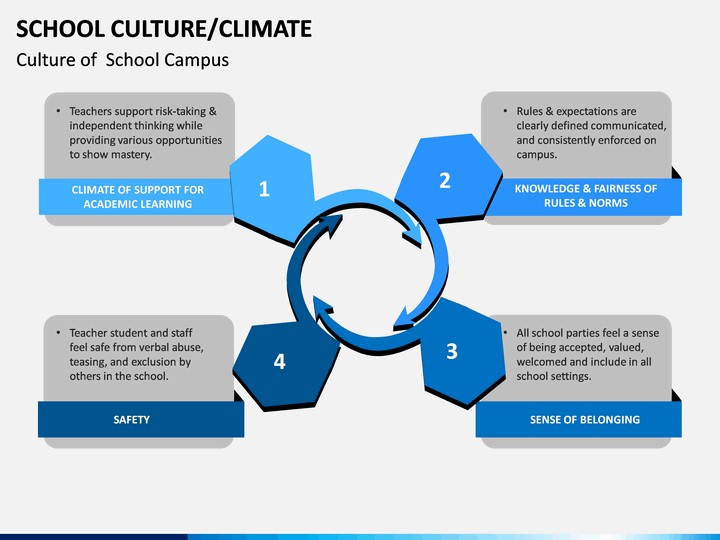
5 Effective Techniques For School Leaders To Create And Sustain A Positive School Culture
27th February 2023
Creating and sustaining a positive culture in a school is a crucial task for educators, administrators, and students alike. A positive culture helps to foster an environment that is conducive to learning, growth, and personal development. When students feel supported and valued by the management of an educational institution, they are more likely to engage in the learning process and achieve their full potential.
Moreover, the perception of a good school is solely dependent on how the culture of the school. This is because every parent will want to send their child to a school where they are heard and valued.
Thus, if you are wondering how to build a positive school culture so that your students feel connected, here are some practical strategies that you can use.
Strategies To Build A Positive School Culture

Without much further ado, let's get to know how education managers and school leaders can develop a positive culture in the school successfully:
- Build a Strong Sense of Community:
Building a strong sense of community is an essential element in creating a positive school culture. This can be achieved by creating a welcoming environment where everyone feels included and valued. Encourage students, teachers, and staff to get to know each other, and facilitate opportunities for them to interact outside of the classroom. This could include activities such as sports teams, clubs, or social events.
You can also make parents involved in the school culture. Conduct frequent parents teacher meetings just to give progress reports or have a one-on-one conversation with them. Ask them if they have any specific kind of concerns or expectations to earn their trust and make the school system transparent.
- Celebrate Diversity:
Celebrating diversity is another critical component of creating a positive school culture. Encourage students to share their unique experiences and perspectives and promote an atmosphere of acceptance and inclusivity. This could include celebrating different cultural holidays, showcasing diverse art and literature, or inviting guest speakers to share their experiences.

Source: sketchbubble.com
You can also build a rewarding culture for good behavior as different students flourish in different fields and teachers should not expect all of their students to be good in academics. Thus instruct your teachers to appreciate and acknowledge every child whenever they perform well in any specific field and also give them rewards if they behave well in class. This will not only make students learn about themselves but value each other as well to create a healthy community.
- Encourage Positive Relationships:
Positive relationships are essential to a healthy school culture. Encourage students to develop positive relationships with their peers, teachers, and other staff members. This could include assigning mentors or pairing students with older peers who can provide guidance and support. Teachers and staff members can also model positive relationships by treating students with respect and kindness.
Rather than enforcing a punishment culture develop a culture where teachers allow students a chance to rectify themselves. This will allow the students to understand the consequences and reflect on their mistakes. With this, instead of hating a particular culture, they will learn to rely on them and reach out to them in case they require counseling.
- Foster a Growth Mindset:
Fostering a growth mindset is crucial to creating a positive school culture. Encourage students to view challenges as opportunities for growth and learning, rather than as failures. This could include teaching them strategies to overcome obstacles and providing feedback that is constructive and supportive.
Recognize and celebrate accomplishments to help them learn and grow. This could include celebrating academic achievements, as well as personal milestones such as acts of kindness or community service. By doing this teachers can help build students' self-esteem and sense of achievement and can also foster a culture of positivity and support.
- Provide Opportunities for Student Voice and Choice:
Providing opportunities for student voice and choice is an effective way to create a positive school culture. Encourage students to participate in decision-making processes, such as selecting classroom activities or choosing community service projects. This can help them feel empowered and invested in their learning and can also foster a sense of ownership over their school environment.
When students feel they are heard and valued, this will encourage a healthy thereby promoting healthy eating habits, providing opportunities for physical activity, and educating students on the importance of self-care. A healthy lifestyle can help students feel more energized and focused and can also contribute to their overall sense of well-being.
Put Your Vision Into Action
Creating and sustaining a positive culture in a school is not a finite activity and requires a collective effort from educators, administrators, and students. Every school has a way of doing things, believing, and growing that comprises the school culture, which is perceptible and pervasive.
Thus, ensuring that the culture is positive and involves a continuous development process while generating opportunities, creating talents, and establishing focus should be the utmost goal of school leaders and educators alike. If you are still unable to figure out ways to uplift your school culture, consider pursuing an online post graduate diploma in educational management to take responsibility and make changes from time to time.
Written By : Park Jin Ae




